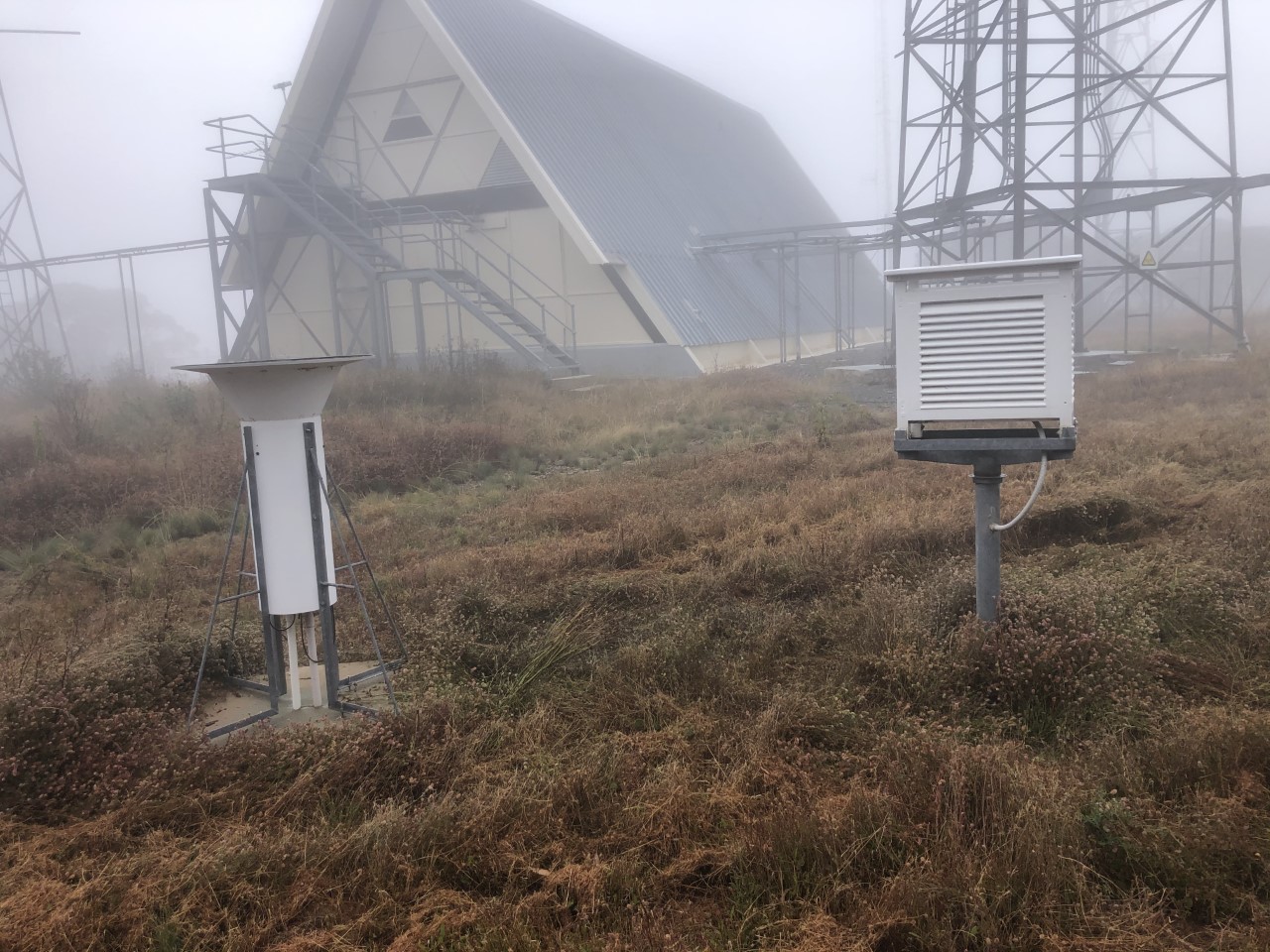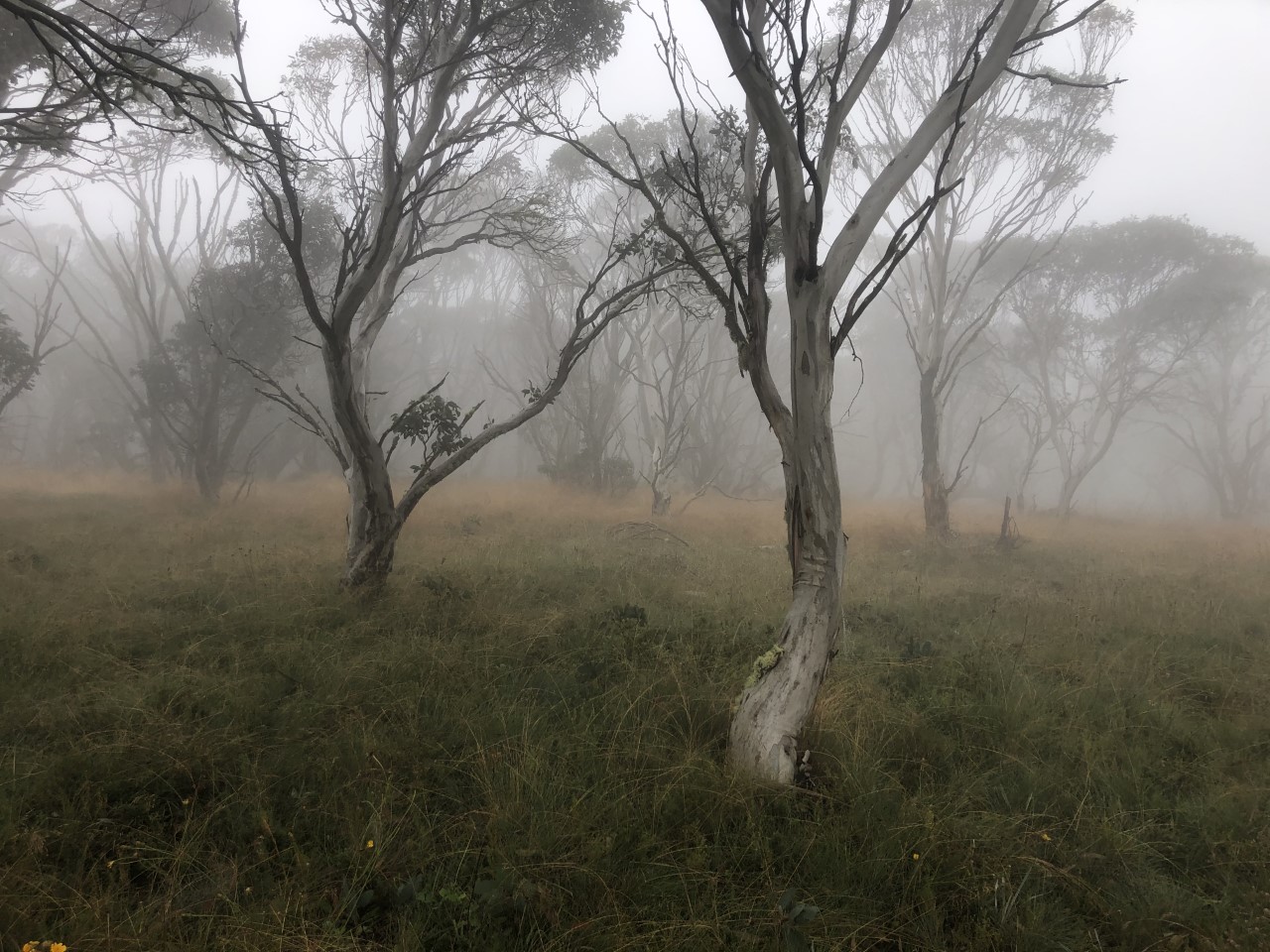Snapshot from Australia's loneliest little mountain weather station
Ever heard of Mt Ginini? It's different up there.
If you follow Australian weather closely, and especially the weather in southern New South Wales and the ACT, then you'll have heard of the Mt Ginini weather station. But few people ever see it.

Image: The humble Stevenson Screen atop Mt Ginini on a foogy Thursday in February. Source: Author's pic.
Mt Ginini is a peak on the Brindabella Range, which straddles the NSW/ACT border on the western fringe of the territory. Its summit is 1762 metres above sea level (to put that in perspective, Mt Kosciuszko is 2228m).
The weather station is located at 1760m which makes it the Bureau of Meteorology’s fourth-highest official weather station after Thredbo Top Station (NSW, 1957m), Mt Hotham (VIC, 1849m) and Falls Creek (VIC, 1765m).
While the highest three high stations are in ski resorts, the Mt Ginini station is located at the end of the rough, little-travelled, potholed gravel Mt Franklin Rd, nearly two hours from downtown Canberra. There’s pretty much nothing else up there, except an unmanned Airservices Australia building which houses a transceiver which is vital for the busy Sydney-to-Melbourne route.

Image: Ghostly Ginini snow gums directly behind (as in a 180-degre turn) where the first image was taken. Source: Author's pic.
The mountain itself lies in the northernmost reaches of the Australian Alps. Back in the 1950s, cadets from Canberra's Royal Military College Duntroon cut a couple of cut ski runs and even installed a basic rope tow ski lift. Today, the mountain is silent apart from the hum of the Airservices Australia facility.
On a clear day, there are fantastic views from Ginini’s summit to Canberra to the east, while to the south, some of Australia’s highest peaks can be seen.
It’s a lonely, almost ghostly place on a foggy day. But it’s also beautiful. Your reporter was there this week enjoying the moody snowgums and the water from the numerous pristine alpine creeks flowing off the mountain’s flanks.
The temperature was cool - barely 10 degrees at midday on a summer day - although things did warm up slightly in the afternoon as the cloud lifted.

Image: These pure creeks form a crucial part of Canberra's water catchment, which is one of the key reasons the area is very difficult to access. Source: Author's pic.
Mt Ginini weather station has been in operation since 2004, and as you’d expect, it sees some pretty extreme temperatures.
- In July (the coldest month) the average maximum is just 2.6°C, while the average minimum is -2.4°C.
- In January (the warmest month) the average maximum is 21.0°C while the average minimum is 10.1°C.
- The coldest maximum on record was -4.8°C in July 2011.
- The coldest minimum on record was -8.5°C in June 2009. (There are small valleys just off the shoulder of the mountain where minimum temps would undoubtedly be lower, and perhaps even as low as -15°C, due to the effect of cold air draining down from the summit. As a rule, mountain peaks are rarely as cold on the most frigid nights as nearby high valleys).
- The hottest recorded maximum - and therefore, the hottest temp recorded on the mountain - was 33.2 on January 4, 2020.
There's an interesting comparison to be made about that last statistic. On the day in January 2020 when Ginini had its hottest ever day of 33.2°C, Canberra set its heat record of 44°C.
Canberra's official weather station at the airport sits at 577m above sea level, so it's nearly 1200 metres lower than Ginini. On a dry day with well-mixed air, you lose just under a degree of temperature for 100 metres of altitude, and that's reflected by the 10.8°C difference between Ginini and Canberra.

Image: Wildflowers are still blooming, even during the last week of summer in the ACT high country. Source: Author's pic.
It was a similar situation the day Weatherzone visited this week. Ginini maxed out at 14.6°C, while Canberra peaked at 24.5°C - a difference of 9.9°C.
So next time you see those Mt Ginini readings on a weather forecast, you can tell your friends everything about it.
You might even visit it yourself one day, though we wouldn't recommend a road trip without a suitable vehicle. It also pays to check the status of the Mt Franklin Road, which usually closes after snowfalls.